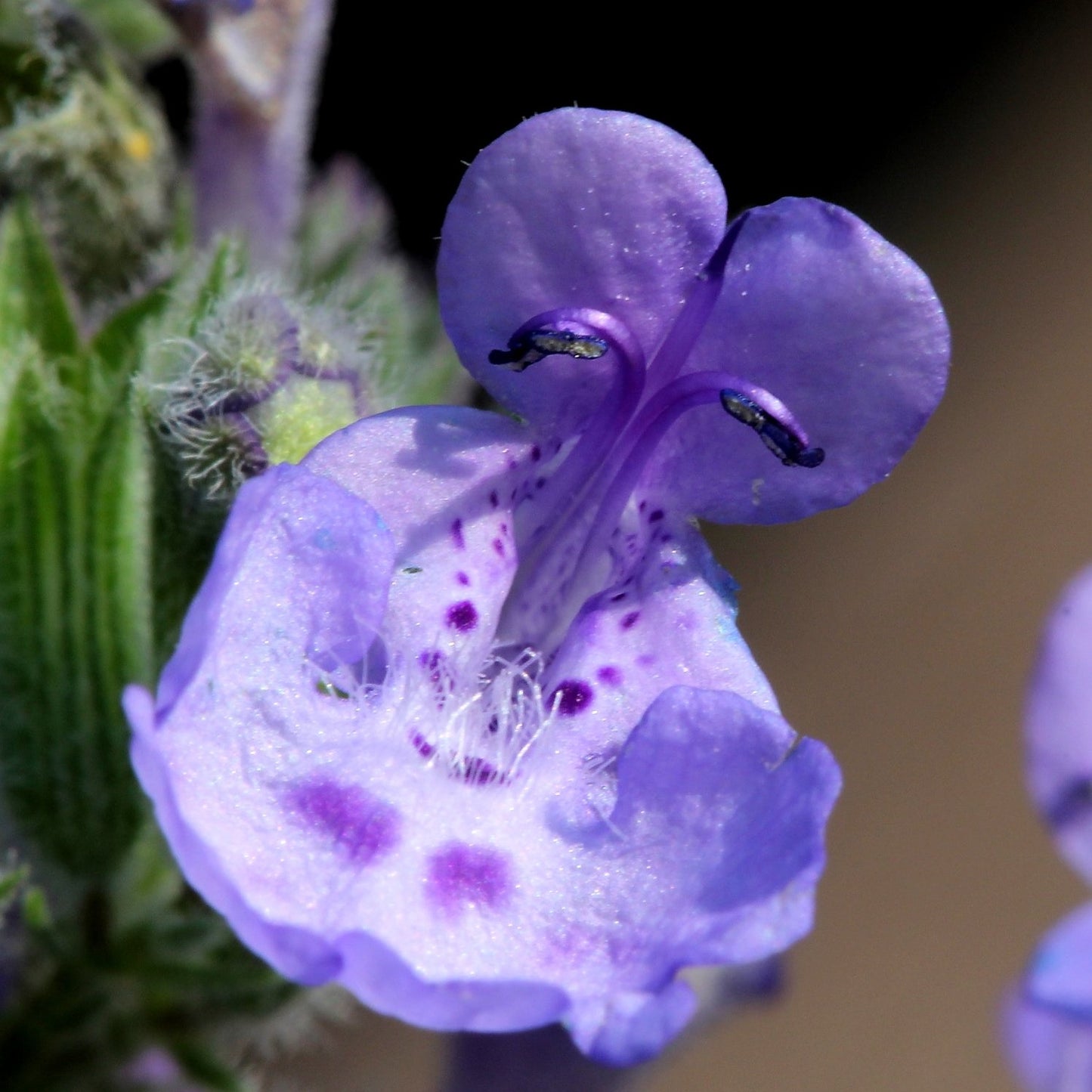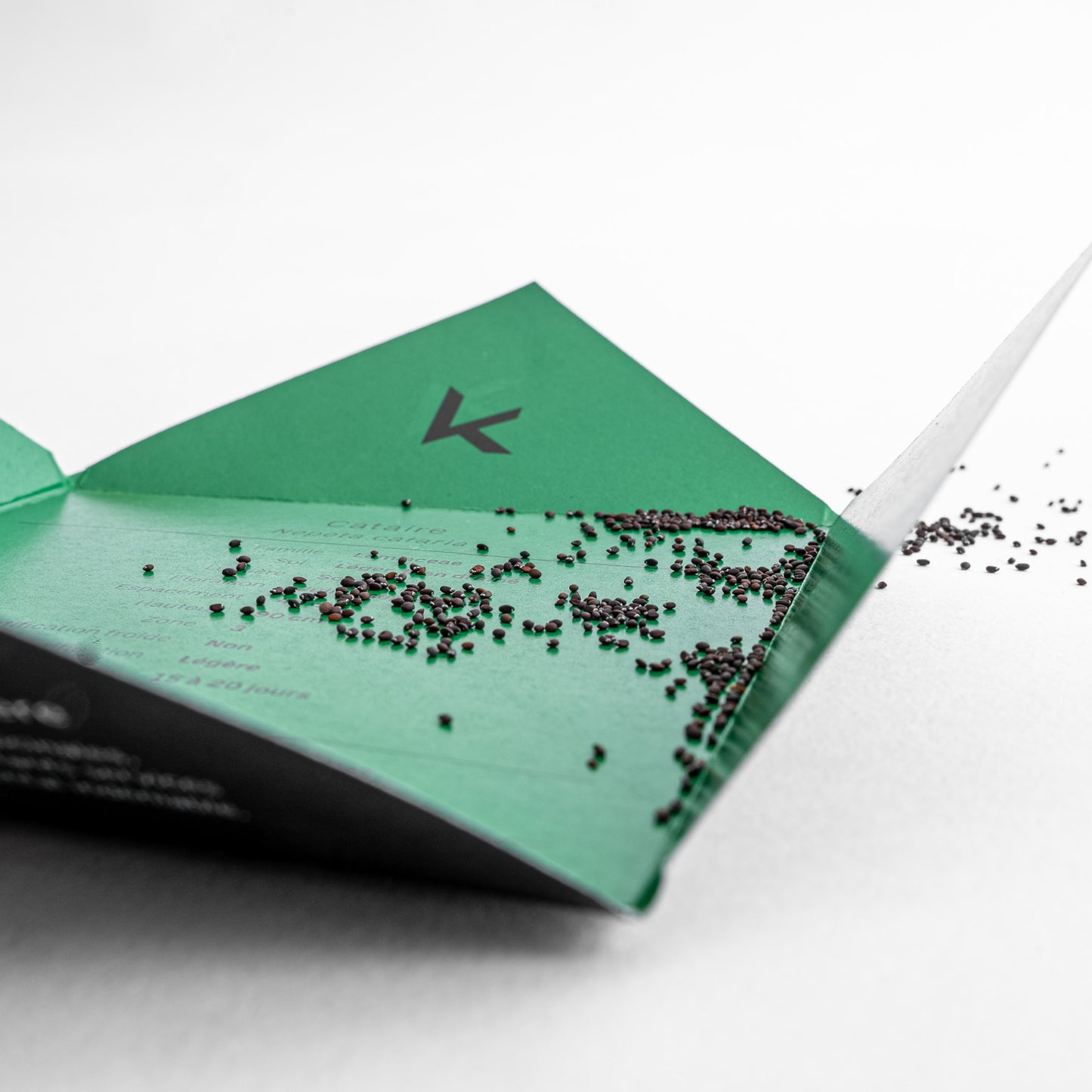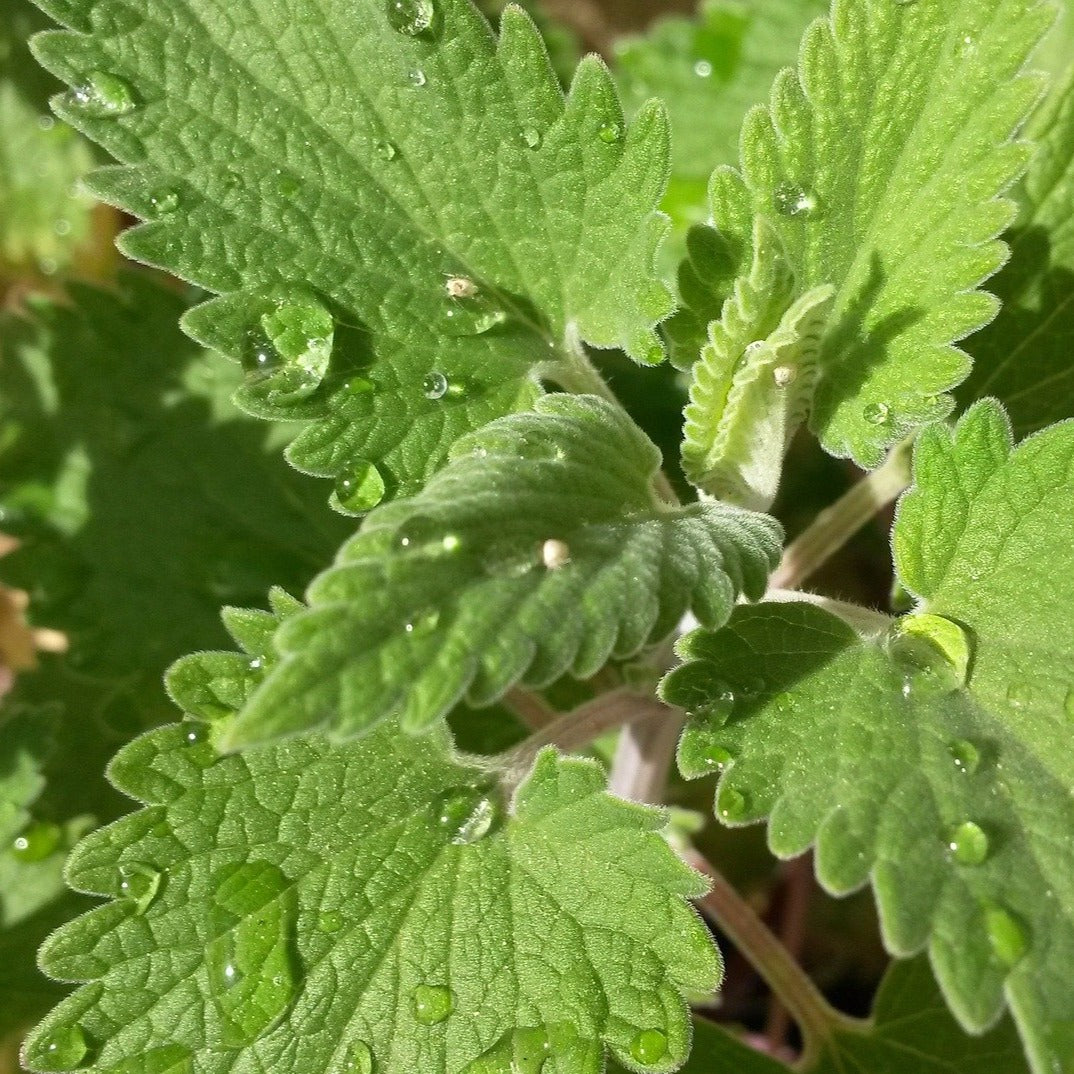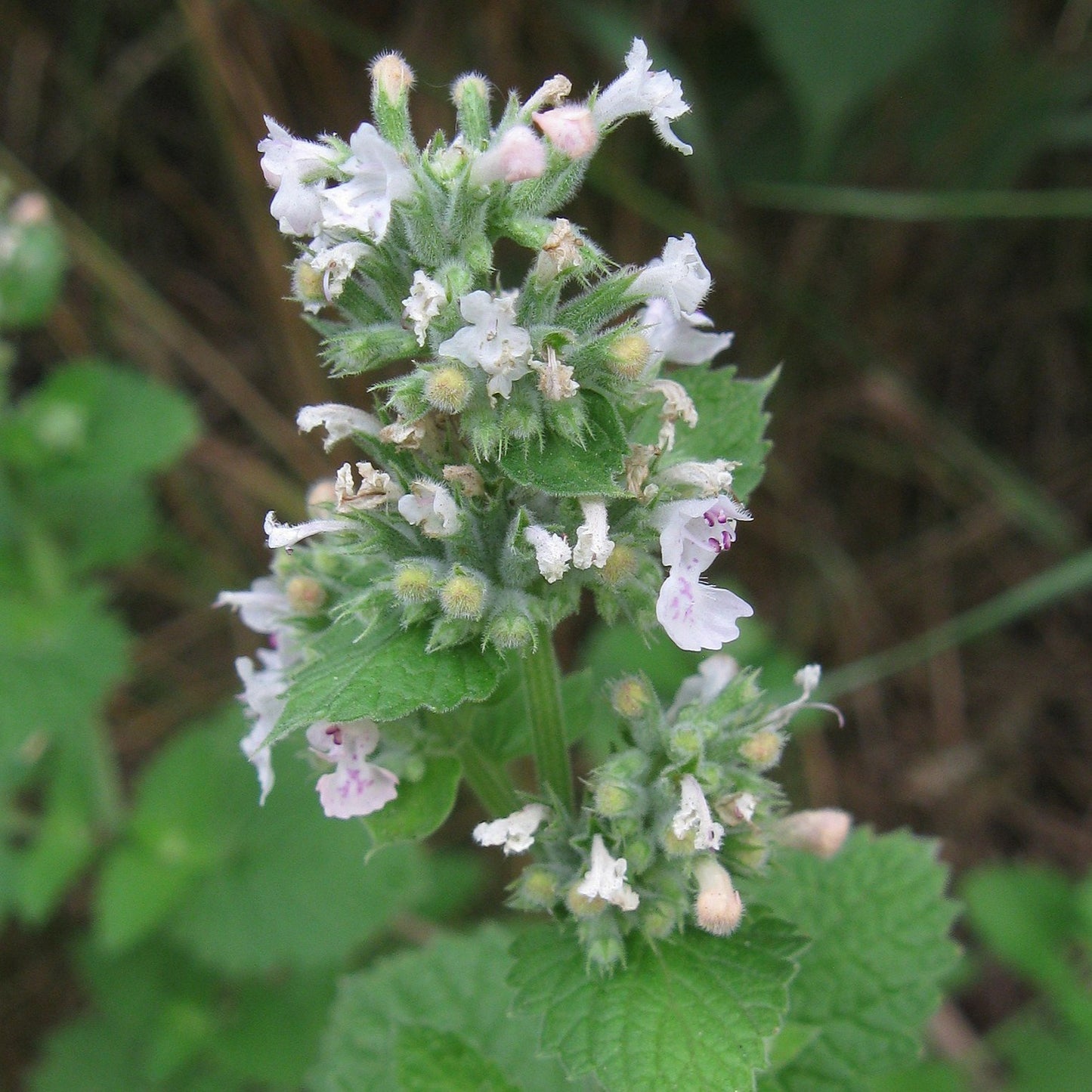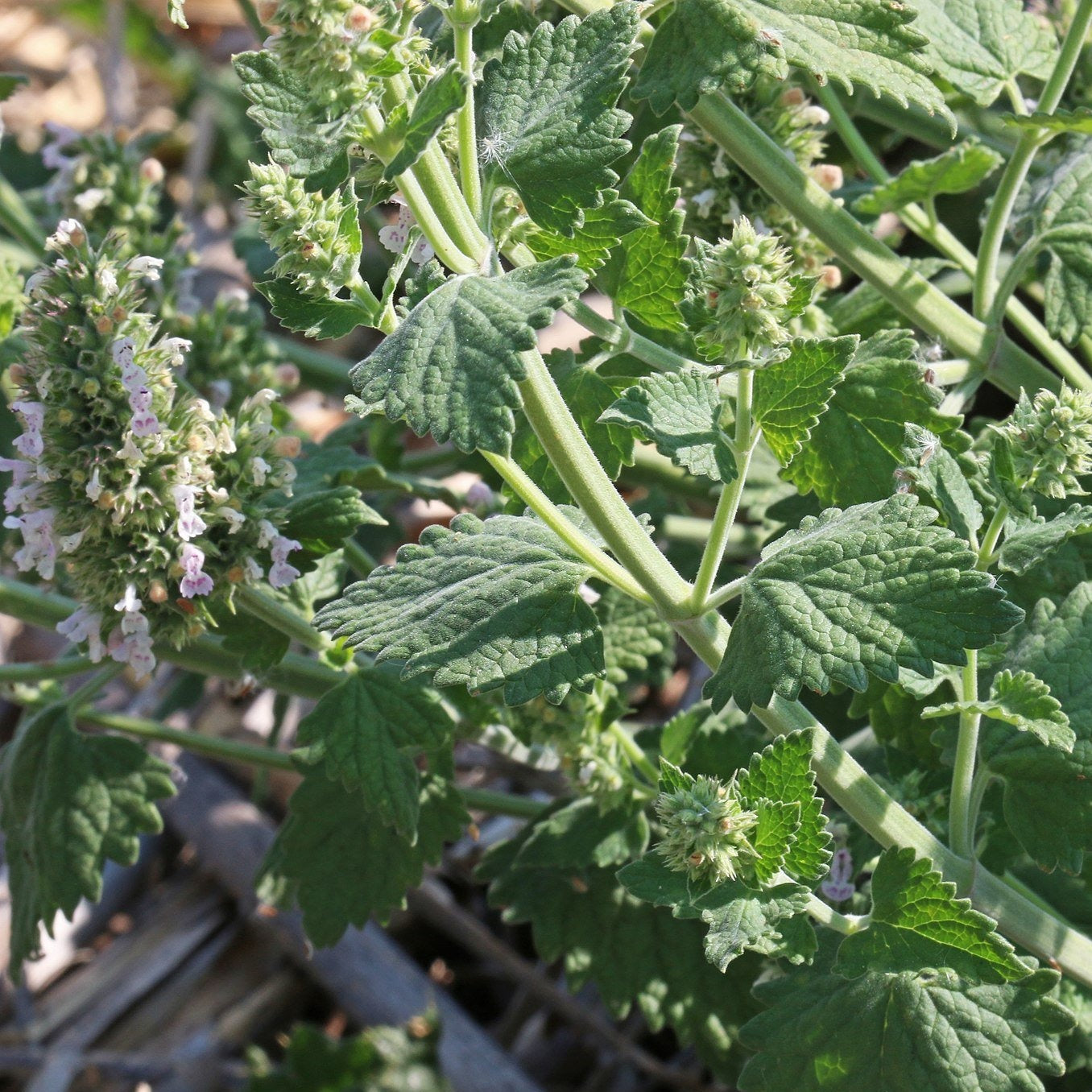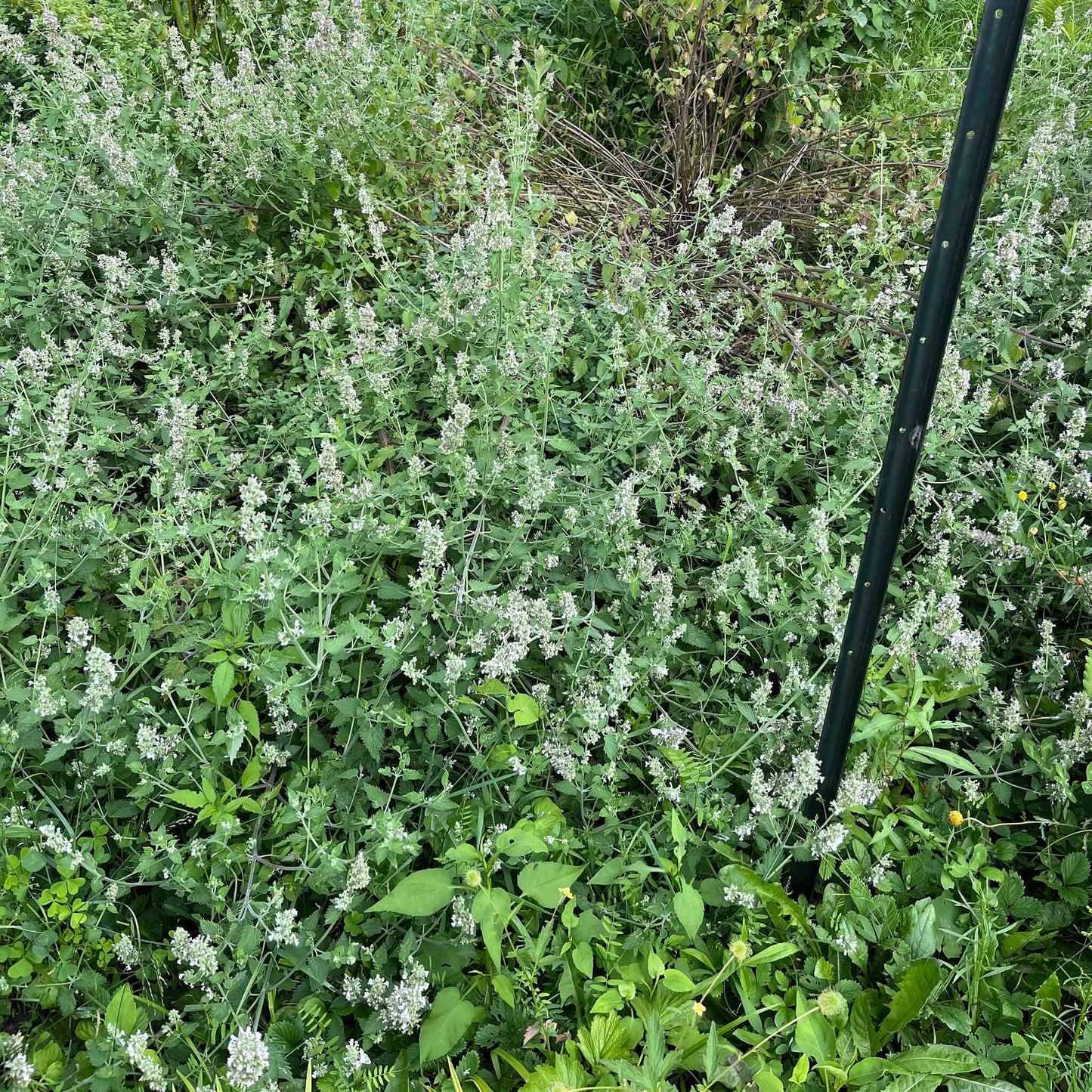This site is protected by hCaptcha and the hCaptcha Privacy Policy and Terms of Service apply.
For successful seedlings,
see the growing notes at the bottom of the page!
Catnip (Nepeta cataria) is an aromatic perennial herb from the mint family (Lamiaceae), valued for both its ornamental and medicinal uses. It blooms from July to September, producing lilac or white flowers with purple spots, which are highly attractive to a wide variety of pollinators. Its greyish-green, toothed, and slightly fuzzy leaves grow on square stems that can reach up to one metre in height. Catnip is well known for its effect on cats, due to the presence of nepetalactone, a compound that triggers a pheromone-like reaction in felines. This plant thrives in well-drained, sunny soils and adapts to moderately rich soils. Its robust growth and attractiveness to pollinators make it a favorite among gardeners.
Medicinal and Culinary Uses
Catnip has long been used for its medicinal properties. The flowering tops, when consumed as an infusion, are particularly recognized for reducing fever by promoting sweating. It is also known for its digestive benefits, calming effects that help ease anxiety, and its effectiveness against insomnia. In addition to its medicinal uses, catnip is employed as a natural mosquito repellent, another reason why it is popular in gardens.
Ecological Roles
Catnip plays an important role in Quebec's ecosystems by attracting a wide variety of pollinators, including bees, butterflies, and other beneficial insects, throughout its blooming period. Its long summer bloom helps maintain continuous pollinator activity in gardens and natural spaces. Beyond its appeal to insects, catnip also has natural repellent properties against mosquitoes, providing a natural defense against these pests. Its aromatic leaves and dense foliage provide shelter and a food source for some small insects as well.
Akène cannot assume any responsibility for the use of plants for therapeutic purposes. Always seek advice from a professional before using a medicinal or edible plant.
Sowing and Growing
Technical Details
Seeds per packet: 400
Family: Lamiaceae
Scientific name: Nepeta cataria
Life cycle: Perennial
Hardiness zone: 3
Soil type: Silty to clayey
Soil moisture level: Medium
Soil - additional attributes: Well drained
Light: Sun
Blooming: June to September
Spacing: 40 cm
Height: 90 cm
Deer resistance: High
Stratification: No
Scarification: Light
Germination time: 15 to 20 days
Sowing depth: 5 mm


